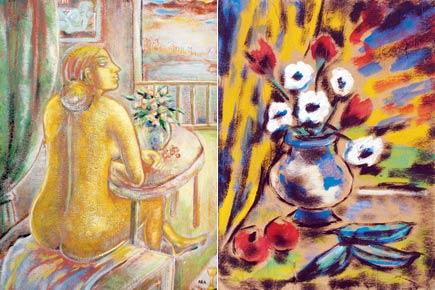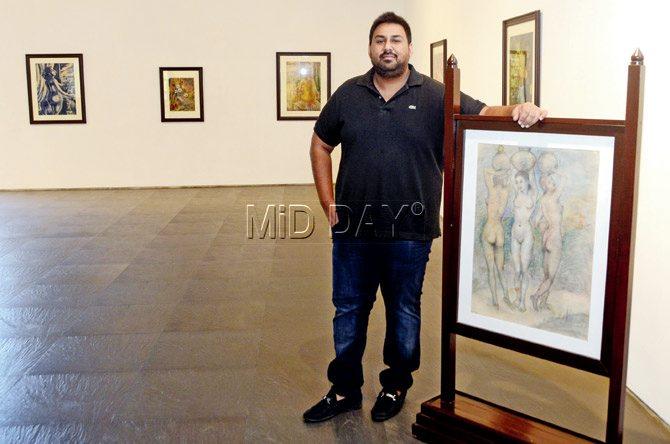A family's collection of works by a noted member of the Bombay Progressives throws light on the beauty of nudes and still life in a new solo show


Calling it a mini retrospective of an underrated artist, Thapar says, "Ara was notable for developing an 'Indian' style of art in his own artistic idiom." As is obvious from the title of the exhibition, KH Ara: A private collection, Thapar has dipped into the holdings of a prominent South Mumbai family, known to have acquired works by other prominent Indian modernists. With Ara, these collectors were friends, often supporting his artistic career through their acquisitions.
The story of how Ara, the son of a chauffeur, made his living by cleaning cars, only to be later spotted by art critic Rudy von Leyden and Walter Langhammer, the then-editor of the Illustrated Weekly of India, is often evoked to trace this artist's journey. Thapar draws attention to a paperwork that has Ara's art on both sides. Three nudes bearing pots flank one side of the paper, and, on the other, is a village potter throwing pots. "This work shows how hard on money Ara was; he was so poor, he couldn't even afford enough art material," says Thapar, adding that Ara went on to support Artists' Centre in Kala Ghoda in an attempt to encourage his community with an exhibition space.

Curator Qaroon Thapar. Pic/Bipin Kokate
This exhibition offers visitors a chance to view Ara's works under one roof, for the last time that the artist had a solo show was 40 years ago at Artists' Centre. The exhibition spans three major genre of works: nudes and still life form a bulk of the works and there are miscellaneous depictions as well. With prices ranging from Rs 4 lakh to Rs 20 lakh, the exhibition, Thapar hopes, will trace the full artistic growth of Ara, who started with still life before moving on to nudes. Known among his contemporaries to celebrate the nude in his work through naturalism, Ara is seen in his multifaceted approach to the nude in this exhibition. "More than the erotic, Ara revelled in the aesthetic beauty of the nude, often making full frontal ones unlike the more conservative side nudes," says Thapar. The most expensive work in the exhibition is a hunched nude, surrounded by the motifs that often recur in Ara's works, such as vases and flowers.
 Subscribe today by clicking the link and stay updated with the latest news!" Click here!
Subscribe today by clicking the link and stay updated with the latest news!" Click here!







_d.png)



